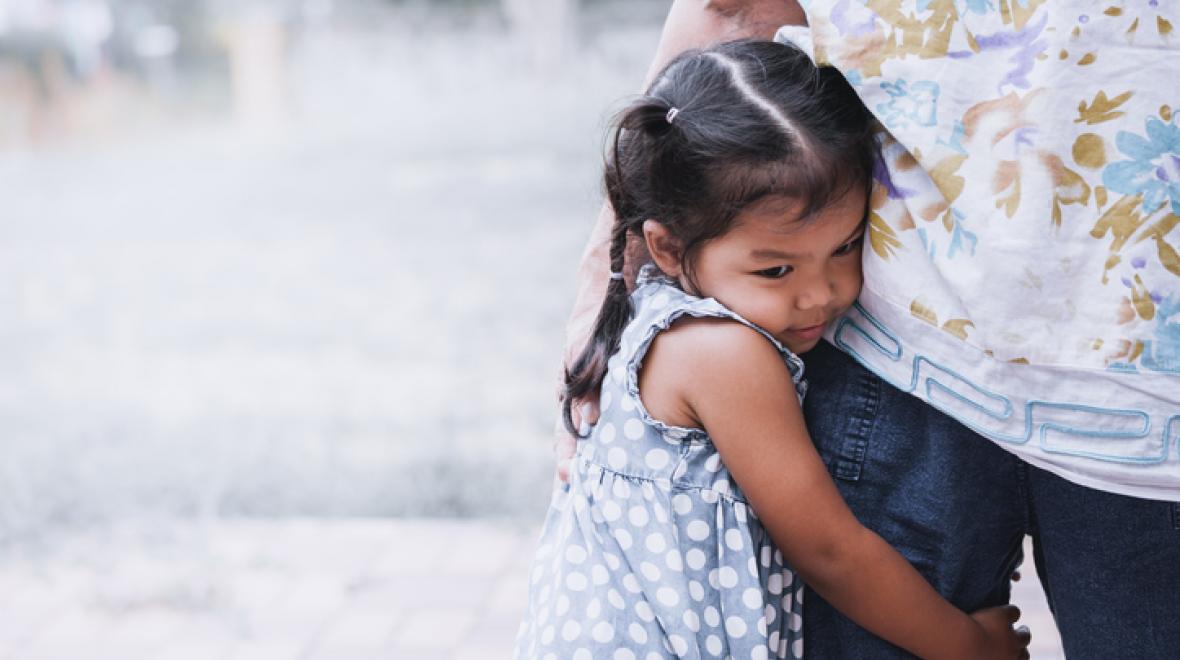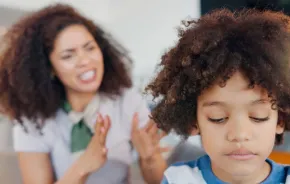
Brace yourself for a gnarly statistic: About 40 percent of kids with an ADHD diagnosis have also been diagnosed with anxiety. I learned that while talking with Chris McCurry, Ph.D., a clinical psychologist in North Seattle. But don’t fear that number, he adds. We’re wired for anxiety.
“I think if you’re living an interesting life, you’ll encounter anxiety because you’re trying new things,” McCurry says. "A lot of kids can have intense fear reactions when attempting something new.”
McCurry would know. He works with children and their families at Associates in Behavior and Child Development (ABCD). He’s also slated to be the speaker at ParentMap’s annual Every Child Resource Fair; he’ll discuss strategies and techniques for helping kids overcome anxiety during his lecture, “Childhood Anxiety and ADHD: A Whole Family Approach” on Thursday, Oct. 19.
I got a preview of that talk and picked up a few tips myself during our recent conversation.
So, what’s the connection? Why are children often diagnosed with both ADHD and anxiety?
It’s all about someone’s attention spotlight. The same brain centers — the frontal lobes — are involved in both [attention and anxiety]. I’m sitting in class but there’s construction equipment outside the window so I’m paying attention to that. Or I’m sitting in class and I’m worried about what’s going to happen at recess. In both cases, I’m not paying attention to the teacher.
Also, ADHD is a huge, broad term with three main subtypes: inattentive, hyperactive/impulsive and combined. There are more than 82,000 combinations of symptoms that meet criterion for combined type ADHD. [That means there] are tens of thousands and thousands of ways ADHD can present itself. Some of that representation is going to include anxiety.
When parents are busy attending to ADHD, how do they help their kids with anxiety issues, too?
When anxious or scared, children try to engage the parent in a helpful way but often the way they go about it isn’t helpful. This creates an anxiety ‘dance’ involving parent and child. When this dance isn’t going well, it can be a nightmare.
These anxiety dances are hard to change because they are well-practiced and not even quite conscious. The first step in changing an unhelpful dance to a helpful one: Become more conscious of the dance. This may initially require a lot of work on the part of the parent; it requires a lot of mindfulness and being present. Then there’s a chance for the parent to do what I call parental aikido: Take that anxious energy and move it in better directions. You may not be solving or curing anxiety but you’re moving things along. That gets us to successful places, out of our minds and into our lives.
How do you start changing the anxiety dance?
Validate what’s going on with the child. Say, ‘You’re feeling X and thinking Y.’ If you don’t say that you get it in a heartfelt way, then the child may continue to tell you [they’re anxious]. ‘I can’t find my socks’ may really be related to ‘I’m stalling because I don’t want to go to school.’
We think we don’t have time to empathize, but it doesn’t take forever. It’s a first step in getting them un-stuck … We’re saying, ‘I got ya. Let’s go.’
Real life may not be the most fun, but it’s better than what’s in my head. [An example of this:] I often tell my clients to find their hands. Oh, there are my hands. What are you supposed to be doing with your hands at this moment? That’s right, I do have hands and they’re supposed to be doing something right now. And that “something” is most often useful and OK.
Wait a minute — what does focusing on your hands have to do with anxiety?
The brain has two modes: default and focus. The default mode is up in your head thinking about stuff. That can be useful or that can a gateway into misery, worrying about the future or ruminating about the past. Focus mode is about being out here in the world. Research suggests human beings are happiest in focus mode. While laying on a beach with a piña colada is nice, humans are happiest doing and being out here in the world in focused mode. It’s better for our mental health.
Give me a few steps on how to help ease a child’s anxiety.
First, increase awareness of what everybody is doing, thinking and feeling. That’s the validation piece. Our children are having a feeling and we have words to describe these feeling. After we name feelings, we move toward action. ‘You’re feeling anxious about going to school. You want my help finding socks and you’d like me to accompany you to school.’ You’re articulating the dance: ‘Oh look, you are feeling this and we are now going to do this.’
Even if the dance doesn’t change right away, by [verbally acknowledging what is happening] things are changing. Say your child’s standing at the bottom of the stairs, whimpering about walking upstairs. You say, ‘I can tell you are having some scary ideas. I’m guessing you want me to come up with you. Can you ask in in a clear, strong voice for me to come with you? That’s the deal, you gotta ask. And if you ask, I guarantee I will go with you.’ You’re taking a risky situation and making it less stressful because the child is pretty sure you are going to come through for them.
Second, redirect attention. You’re changing the focus of attention to something more useful or simply breaking the grip of the anxious thoughts. ‘Where are your hands? Let’s use our hands to do what’s next.’
Third, focus on some valued goal. ‘Let’s go upstairs together and get those socks’ or ‘Let’s go to school to see your friends.’ [Your child] may not be excited about school, but you’ve found out they like seeing their friends at school, so you focus on that to achieve the goal.
How calm do you need to be when dealing with your child’s anxiety?
I think being calm is often overrated. If you’re totally calm with your child who is fearful or worried or having a tantrum, that can be totally invalidating. Sometimes I’ll tell parents it’s OK to yell; the trick is to yell before you’re totally angry. I’m not telling people to start throwing furniture [but] to make use of their own feelings conveyed through tone of voice and facial expression.
If your kid is having a tantrum, yell sooner. Don’t wait until you’re full of rage. Use your feelings to get energetic with the demeanor of a highly energetic camp counselor. You’re energetic and enthusiastic but you’re not angry. It’s a different tone: ‘OK campers! I need socks on those feet! I need shoes too!’
People are afraid of emotions, but feelings aren’t the problem. What matters are the choices we make when feeling certain emotions, the behaviors that either make the situation work or make it into a problem.
How can parents deal with their own stress when it comes to helping an anxious child?
I’m a big fan of parent resilience. How do we sustain these efforts over the long haul? We talk to people. We build a community so we aren’t feeling isolated.
It’s basic self-care stuff: sleep, diet, exercise, minimizing substances. We know exercise is the miracle drug. You need two hours a week for yourself that’s scheduled or at least planned. ‘This is my time. I’m looking forward to it and I don’t care what else is going on — I’m taking it.’
Having meaningful narrative about what you’re doing makes what you’re doing meaningful and sustainable when things get difficult. It’s true what they say about putting on your own oxygen mask first.
Try this the next time they have a tantrum |











